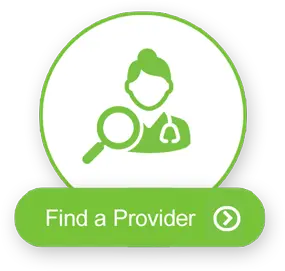
In the days leading up to his death by suicide, Linkin Park frontman Chester Bennington was photographed smiling broadly, hanging out with his kids.
In her Instagram post, Talinda Bennington said “This was days b4 my husband took his own life. Suicidal thoughts were there, but you’d never know.”
Rolling Stone magazine reported: “Bennington had always been open about his struggles with addiction and depression, but those close to him were shocked by his suicide. The day after [Soundgarden frontman Chris] Cornell’s memorial, Bennington tweeted that he was ‘feeling very creative’ and had written six new songs. Around the same time, he told a friend, Rene Mata, ‘We have to stick together, and we have so much to live for.’”
Caregivers and loved ones of people with depression may know their loved one is battling the disease, but can’t ever really know what their loved one is actually thinking or feeling. And they never really know when depression and depressive thoughts turn to suicide.
How can a caregiver ensure they are giving the best help and support to a depressive patient? What are the warning signs of suicide and how – and how much – should you monitor your loved one’s behavior? The reality is that there are no easy answers, but understanding more about depression and suicide can help.
Smiling Depression
In a recent Psychology Today article, Rita Labeaune, Psy.D. talked about the very nature of hidden depression. She defined “smiling depression” as “appearing happy to others, literally smiling, while internally suffering with depressive symptoms.”

Although people suffering from “smiling depression” may appear to have it together to their friends and families, their depression has many of the same symptoms: feelings of sadness, low self-esteem, sleeping too much or too little, lack of appetite or overeating, and, sometimes, suicidal thoughts.
Discovering Hidden Depression
When depression is hidden and the person seems “happy,” can loved ones pick up clues to how they are really feeling? According John M. Grohol, Psy.D., who wrote an article in PsychCentral.com, there are six signs of concealed depression:
- Sleeping, eating or drinking habits that are unusual for them. This could be sleeping too much or too little. Likewise, a person suffering from hidden depression may have a voracious appetite or just pick at their food. Additionally, a person may turn to alcohol to self-medicate.
- Forcing happiness and making excuses. A person who makes a lot of excuses for why they can’t get together may fear forcing happiness. As a result, they make up reasons for avoidance – some of which may not hold water.
- Talking philosophically. This could include everything from talking about what it all means, to what they’ve been able to accomplish so far in their lives, and/or the meaning of life.
- Asking for help, but taking it back. According to Grohol: “People with hidden depression struggle fiercely with keeping it hidden. Sometimes, they give up the struggle to conceal their true feelings and so they tell someone about it…but then they wake up the next day and realize they’ve gone too far.”
- Intense feelings. This could include acting outside of the norm. A stoic person may start to laugh loudly at inappropriate things or burst out crying at a normally benign situation.
- Pessimistic about everything. “Psychologists refer to this phenomenon as depressive realism… When a person suffers from depression, they may actually have a more realistic picture of the world around them and their impact on it,” wrote Grohol.
If you observe this behavior in a loved one, it may be time to encourage them to reach out to a mental health care professional for help. If you are recognizing these symptoms in yourself, please consider seeking help.
Recognizing Suicidal Risk Factors
Sometimes, depressive thoughts and behavior can turn to suicidal thoughts. These thoughts or actions can look different in every person. However, there are warning signs that indicate a person may need urgent help. Because this is a matter of life and death, the list below is posted in its entirety from Save.org:
- “Talking about wanting to die or to kill oneself;
- Looking for a way to kill oneself;
- Talking about feeling hopeless or having no purpose;
- Talking about feeling trapped or being in unbearable pain;
- Talking about being a burden to others;
- Increasing the use of alcohol or drugs;
- Acting anxious, agitated, or reckless;
- Sleeping too little or too much;
- Withdrawing or feeling isolated;
- Showing rage or talking about seeking revenge; and
- Displaying extreme mood swings.”
Chester Bennington’s widow shared an intimate look at her husband’s hidden depression through photographs and videos to help other people struggling with depression. If you or someone you know is considering suicide, please contact the National Suicide Prevention Lifeline at 1-800-273-TALK (8255).
If you are interested in this topic, you can read more here: https://genesight.com/blog/patient/recovery-to-remission-understanding-common-terms-to-diagnose-depression/ or view our infographic here: https://genesight.com/blog/patient/decoding-clinical-talk-remission-response/
Our articles are for informational purposes only and are reviewed by our Medical Information team, which includes PharmDs, MDs, and PhDs. Do not make any changes to your current medications or dosing without consulting your healthcare provider.
The GeneSight test must be ordered by and used only in consultation with a healthcare provider who can prescribe medications. As with all genetic tests, the GeneSight test results have limitations and do not constitute medical advice. The test results are designed to be just one part of a larger, complete patient assessment, which would include proper diagnosis and consideration of your medical history, other medications you may be taking, your family history, and other factors.
If you are a healthcare provider and interested in learning more about the GeneSight test, please contact us at 855.891.9415. If you are a patient, please talk with your doctor to see if the GeneSight test may be helpful.






